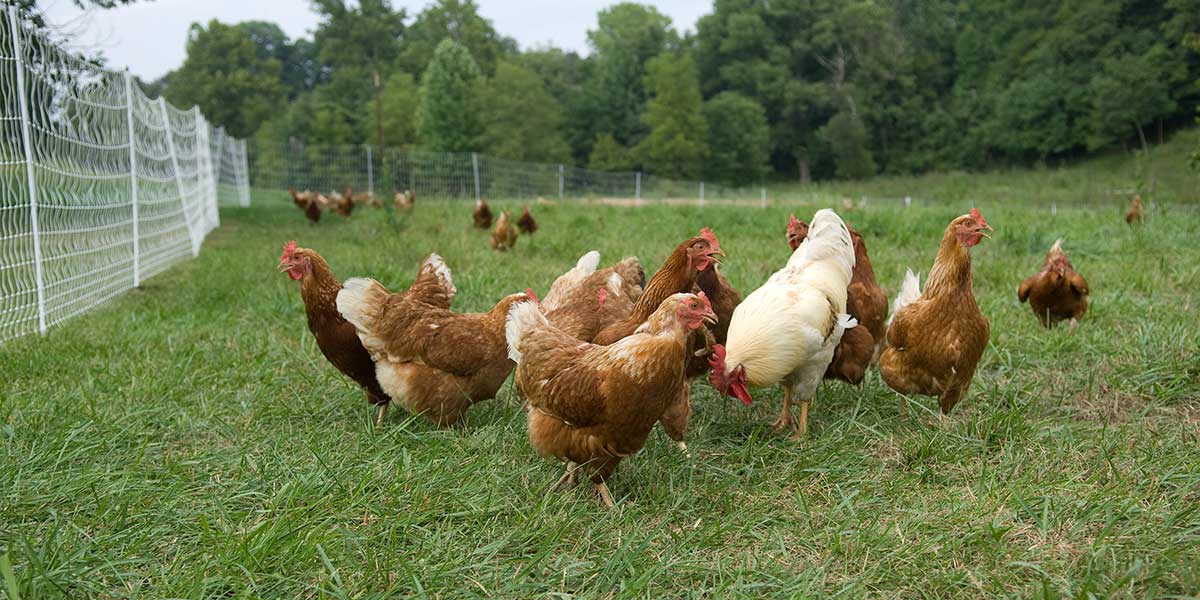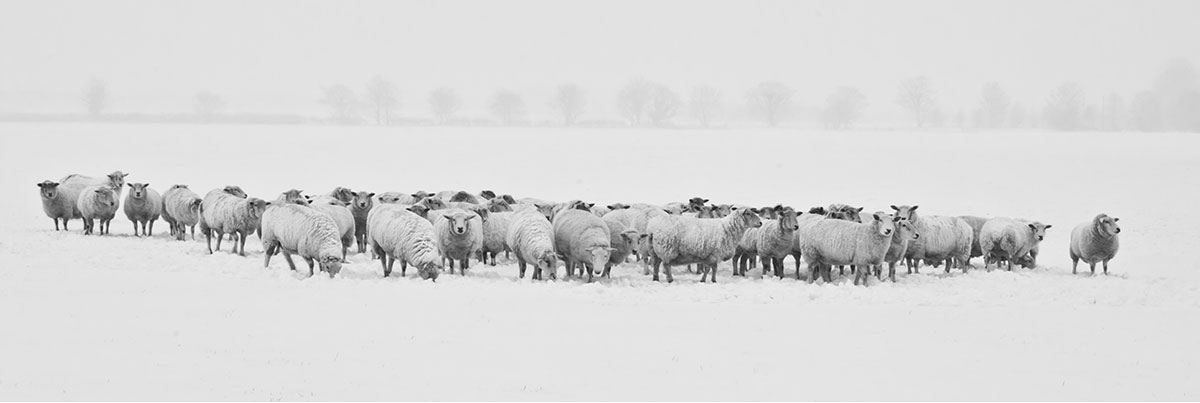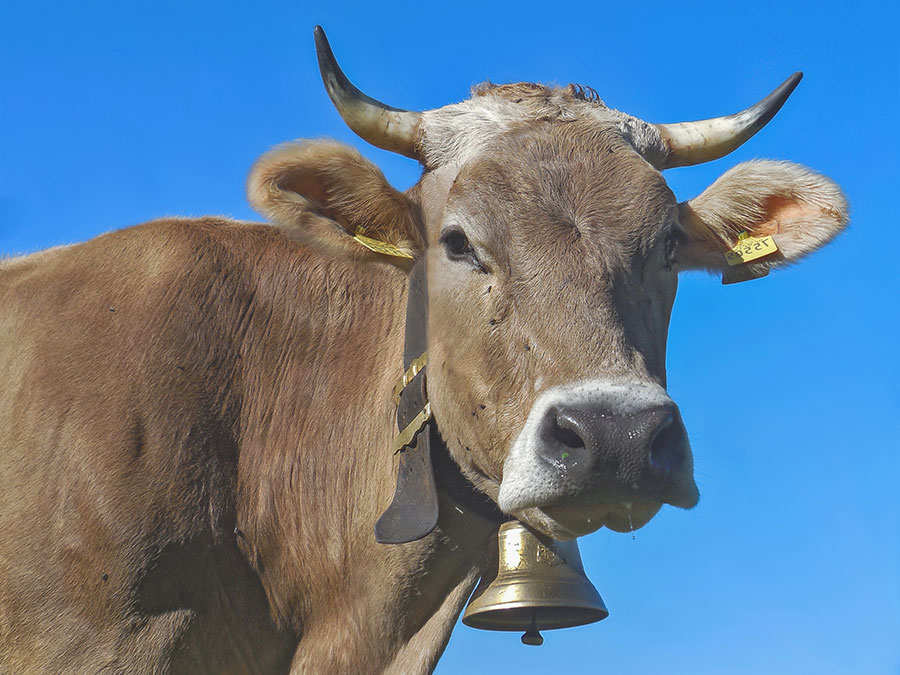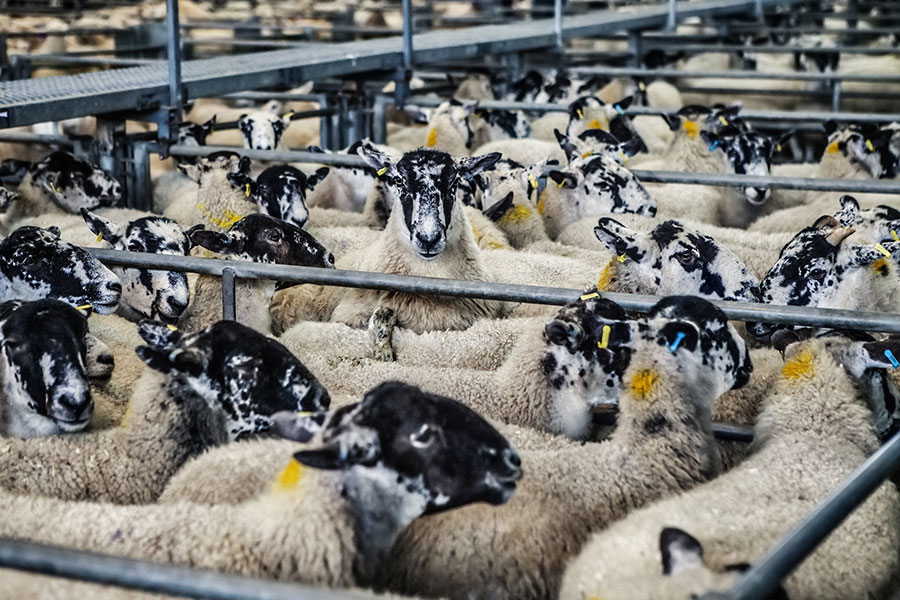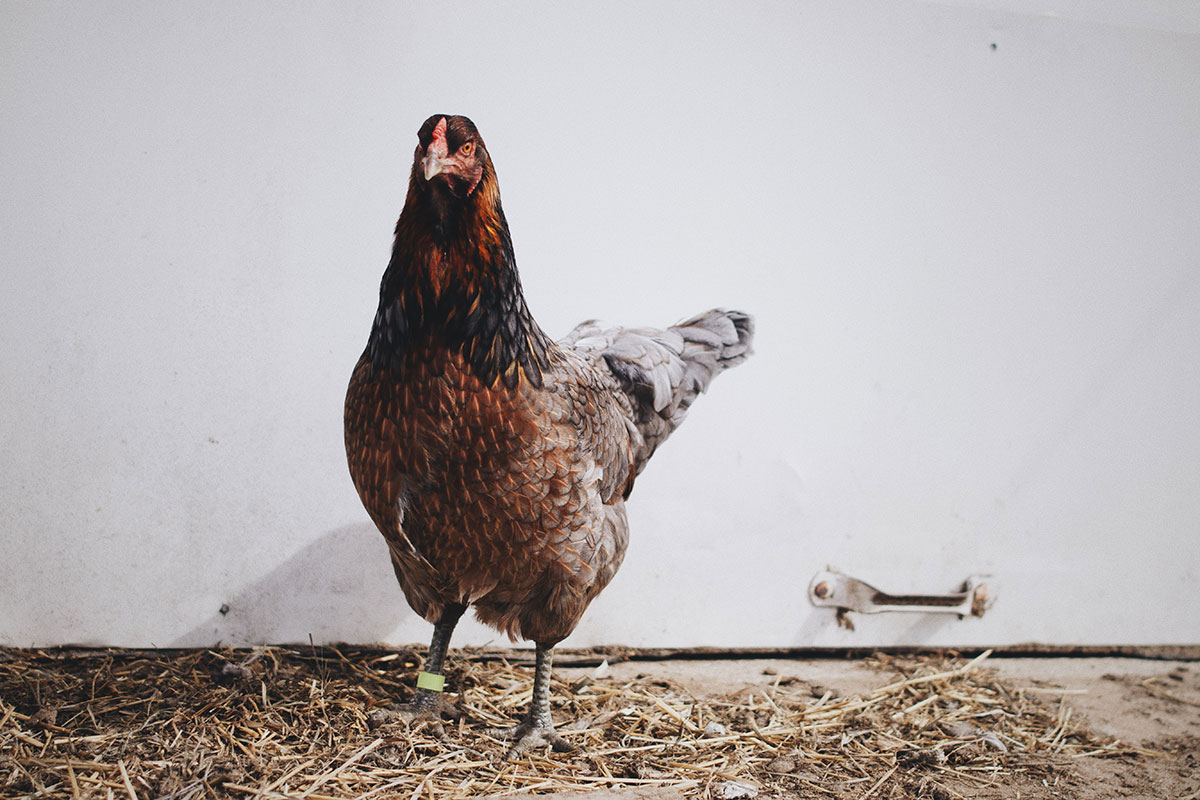Farmers today who regularly tattoo their hogs, goats, cattle, horses, and other livestock may not realize it, but they are participants in a practice dating back to the very dawn of human civilization.
Thousands of years ago, almost as soon as our hunter–gatherer ancestors stopped hunting–gathering and instead took to farming and animal husbandry in fixed settlements to supply themselves with reliable sources of food and clothing, they realized they had a new challenge to face: how to keep track of their ever-growing herds of swine, goats, cows, sheep, and other animals in their care.
To prevent the theft of livestock by unscrupulous neighbors, and also to resolve ownership disputes in the event any of the animals wandered off and mingled with someone else’s herd, it became necessary for farmers to devise a mutually acceptable method of marking the animals to establish proper ownership of their food- and breeding-stock. According to some anthropologists, the need to identify individual animals by means of body markings may have also sparked the invention of numbers for the purpose of tallying heads of livestock.
And thus was born the art and science of animal identification—arguably the world’s first true accounting system.
Some Tattooing History
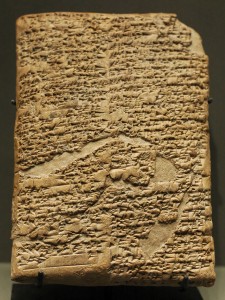
Historians and archaeologists have discovered solid evidence of the practice of animal identification stretching back to Biblical times. For example, it is alluded to in the Old Testament Book of Genesis; and the Mesopotamian Code of Hammurabi (1754 BC) enshrined it into law.
Thanks to ancient Egyptian hieroglyphics and other preserved records, we even know something about the earliest methods of animal marking, which included notching the horns of cattle as well as branding with a hot iron.
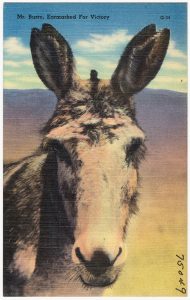
Perhaps one of the most traditional and charming types of animal identification systems is the old-fashioned cow bell, which offered an audible rather than visual signal to the cowherd as to the whereabouts of their cattle.
Besides hot-branding, notching, earmarking, and cow bells, in the modern era other methods of animal identification include banding, tagging, chalking, painting, freeze-branding, nose-printing, collars, microchip implants, electronic transponders using radio-frequency identification (RFID), DNA profiling—and, of course, tattooing.
Oddly enough, though tattooing livestock is one of the most cost-efficient and dependable means in use today for identifying livestock, it really did not become common until the 20th century. This is especially surprising, in that humans all around the world have been tattooing their own skin since prehistoric times, right up until the present day.
As for animals, in the late 19th century it become something of a fad to get the family dog tattooed on its chest with the owner’s initials. Moreover, historically tattoo artists have used freshly butchered pig skin—which is anatomically similar to human skin—as a canvas upon which to practice their craft.
Throughout history human tattoos have served variously as religious expressions, protection from disease, defense from black magic, physical adornment and, perhaps most importantly, as self-identification of the individual as a member of a special status group or tribe.
Given the past evidence of pig skin canvasses and monogrammed dogs, therefore, one wonders why it took so long for people to realize the benefits of tattooing farm animals for the specific purpose of livestock identification.
Benefits of Tattooing Livestock
If the goal is to minimize the loss of animals, promote efficient herd management, control production, and help prevent the spread of disease (biosecurity)—all at a minimal cost—it’s hard to find a better method than tattooing, which boasts some key advantages over other forms of animal identification:
- The tattoo is small and unobtrusive, so the animal’s skin is not significantly damaged by the procedure.
- Tattooing is much less painful and stressful for the animal than branding, and the biologically inert ink does not adversely affect the animal’s health.
- The procedure is suitable for virtually all livestock—cattle, sheep, goats, horses, pigs, chickens, game animals, and yes, even dogs—and it can be performed on animals of any age or size.
- The combined cost of equipment, consumables, and labor is relatively low and requires less preparation and infrastructure than other methods of livestock identification.
- Most important of all, the tattoo is permanent.
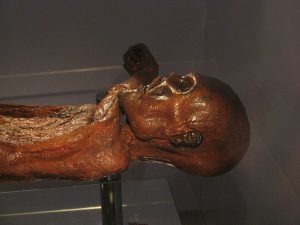
“How permanent?” you may ask. In answer to that question, consider the case of Ötzi—also called “The Iceman”—the Copper Age man whose naturally mummified remains, preserved in glacial ice, were discovered in 1991 high in the Ötztal Alps. Researchers have identified some 61 tattoos on his skin. Ötzi is about 5,300 years old.
How’s that for permanent?!
Livestock Ear-tattooing Procedure

Essential tattoo equipment consists of tattooing ink plus a pair of pliers equipped with changeable dies with sharp needles that form the numbers and/or letters to be imprinted on the skin. The tattoo ink is forced into the punctures made by the pliers, and remains visible after the puncture wounds have healed.
Since tattooing is suitable for virtually all kinds of livestock, the general procedure to be followed for a successful tattoo is largely the same for pigs, goats, sheep, cattle, etc.:
- Work in a clean environment to avoid spreading infectious disease.
- Make sure the tattoo dies have been cleaned and sterilized.
- Restrain the animal.
- Using rubbing alcohol, clean the area of the skin to be tattooed.
- Apply a generous amount of ink to the area of the ear to be tattooed.
- Quickly and firmly squeeze the tattoo pliers on the ear, making sure all the die needles have penetrated the skin over the ink.
- Remove the pliers.
- If need be, reapply ink over the holes made by the dies, and then gently rub it into the holes by hand or with a toothbrush.
- Clean off any excess ink, and re-sanitize the equipment with alcohol before moving on to the next animal.
After several weeks, the ink will dry and the punctures will heal, leaving behind a legible, permanent means of identification on the ear.
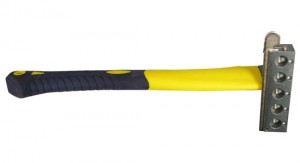
Some animals—pigs in particular—can be tattooed on a firm, flat area of the skin, such as the shoulder or back. In that case, use a slapper instead of pliers, where the ink is applied directly to the dies with an ink pad and then “slapped” onto the skin.
The color ink used for the tattoo depends on the type of animal. For breeds with dark-pigmented skin, use green ink instead of black for better legibility.
Because the tattoo is so unobtrusive, it is often advisable to employ as well a complementary backup identification system, including non-permanent means such as ear tags or neck tags, which are visible from a distance.
Below are additional notes on tattooing specific types of livestock.
Tattooing Pigs
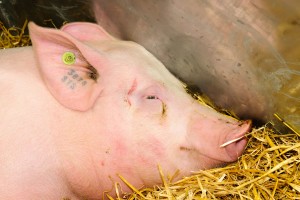
Due to the relatively sparse presence of hair on their skin’s surface, swine are the most commonly tattooed domesticated farm animal. While ear-notching, paint, and collars and tags may also be used, permanent tattooing of pigs by means of tattoo pliers or a slapper is the most common method used on most farms.
Tattooing Goats
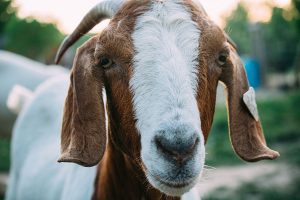 While small ear tags are often used to identify goats, they can also be marked with ear tattoos. The tattoo should be applied inside the ear, usually between the middle ribs, where there is relatively little hair to get in the way. If necessary, clipping away some of that hair may be necessary so as to avoid interference with the tattooing pliers.
While small ear tags are often used to identify goats, they can also be marked with ear tattoos. The tattoo should be applied inside the ear, usually between the middle ribs, where there is relatively little hair to get in the way. If necessary, clipping away some of that hair may be necessary so as to avoid interference with the tattooing pliers.
As with pigs, darker-skinned breeds (such as Alpine goats) should be tattooed with green or white ink for maximum legibility. Because they lack large external ears, La Mancha goat breeds are typically tattooed on the tail web. For purposes of restraining them during the procedure, young goats can be placed in the type of box that holds kids for disbudding.
The procedure for tattooing sheep ears is almost identical to that of tattooing goats. However, sheep can also be tattooed on the inside of their flank.
Tattooing Cattle
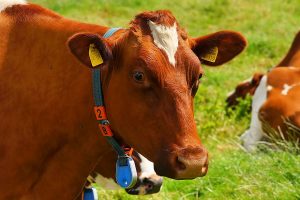 As this photo illustrates, redundancy in livestock identification is always a good idea. Besides ear tags and electronic transponders, cattle can also be tattooed. Proper identification enables the producer to keep comprehensive records of management practices, milk production, reproduction history, and health issues. A unique, permanent identification mark like a tattoo allows for the orderly proof and transfer of ownership, especially in larger herds. It is also required if the owner wishes to register purebred animals with breed registries or exhibit them at livestock shows.
As this photo illustrates, redundancy in livestock identification is always a good idea. Besides ear tags and electronic transponders, cattle can also be tattooed. Proper identification enables the producer to keep comprehensive records of management practices, milk production, reproduction history, and health issues. A unique, permanent identification mark like a tattoo allows for the orderly proof and transfer of ownership, especially in larger herds. It is also required if the owner wishes to register purebred animals with breed registries or exhibit them at livestock shows.
Tattooing Horses
The ancient Greeks had a sophisticated identification and registry system for their horses. For example, around 350 BC the names of the horses belonging to the Athenian cavalry of Alexander the Great’s army were inscribed in lead tablets, along with the color and price of the animal and the owner’s name.
 Nowadays, horse breed associations require animal registrations that list essentially the same sort of information as those lead tablets of yore. Most breeds of horses racing in North America are required to have a lip tattoo for identification purposes. As this screenshot (from the video below) illustrates, the tattoo is situated inside the upper lip and is linked to the registration papers to identify the horse and owner. The tattoo should be applied as late in the horse’s life as possible, as it will spread out as the animal grows and become harder to read.
Nowadays, horse breed associations require animal registrations that list essentially the same sort of information as those lead tablets of yore. Most breeds of horses racing in North America are required to have a lip tattoo for identification purposes. As this screenshot (from the video below) illustrates, the tattoo is situated inside the upper lip and is linked to the registration papers to identify the horse and owner. The tattoo should be applied as late in the horse’s life as possible, as it will spread out as the animal grows and become harder to read.
For all your farm and herd management needs, Ketchum Mfg. Co. offers a wide selection of high-quality pig tattooing equipment and supplies, along with other animal identification systems, including:
